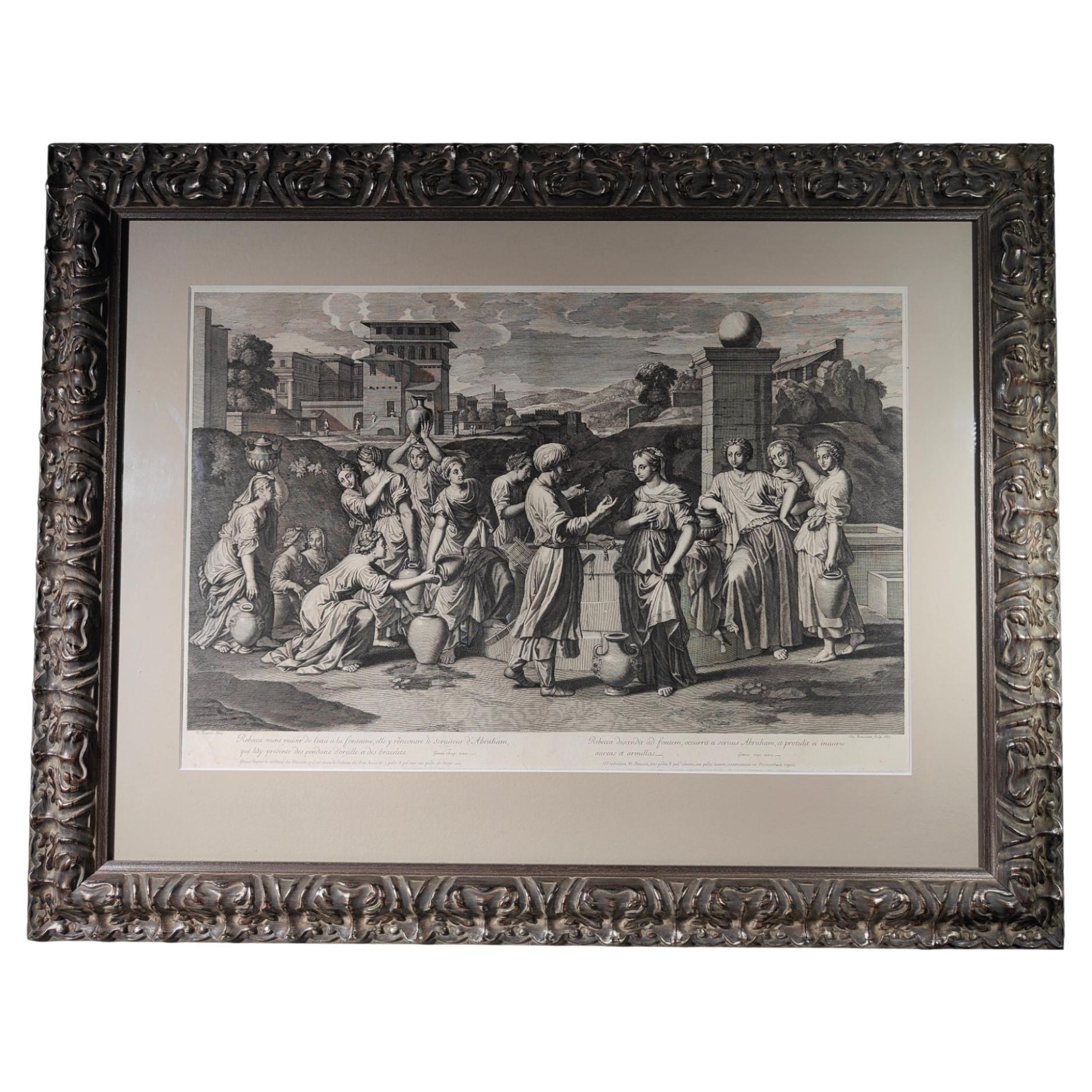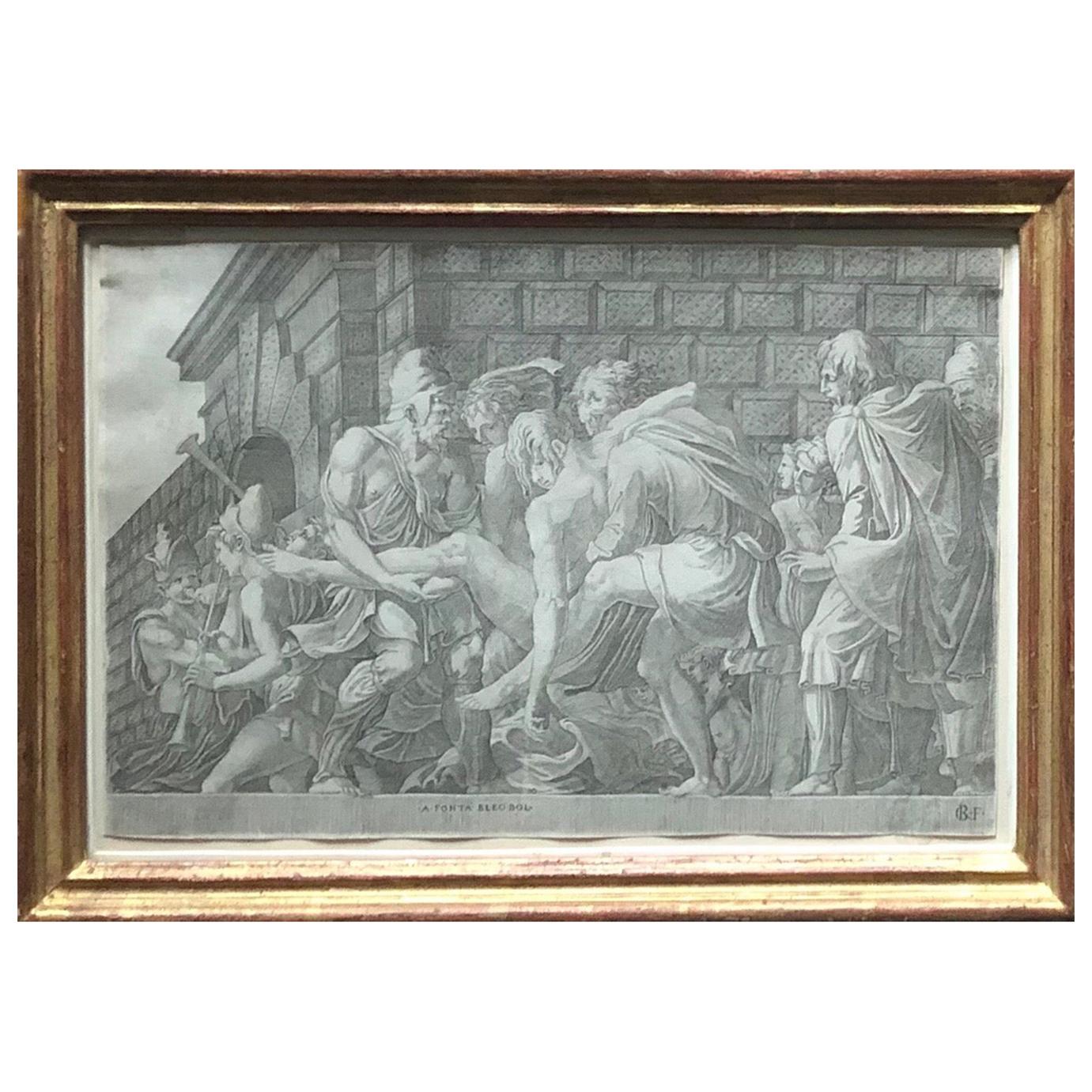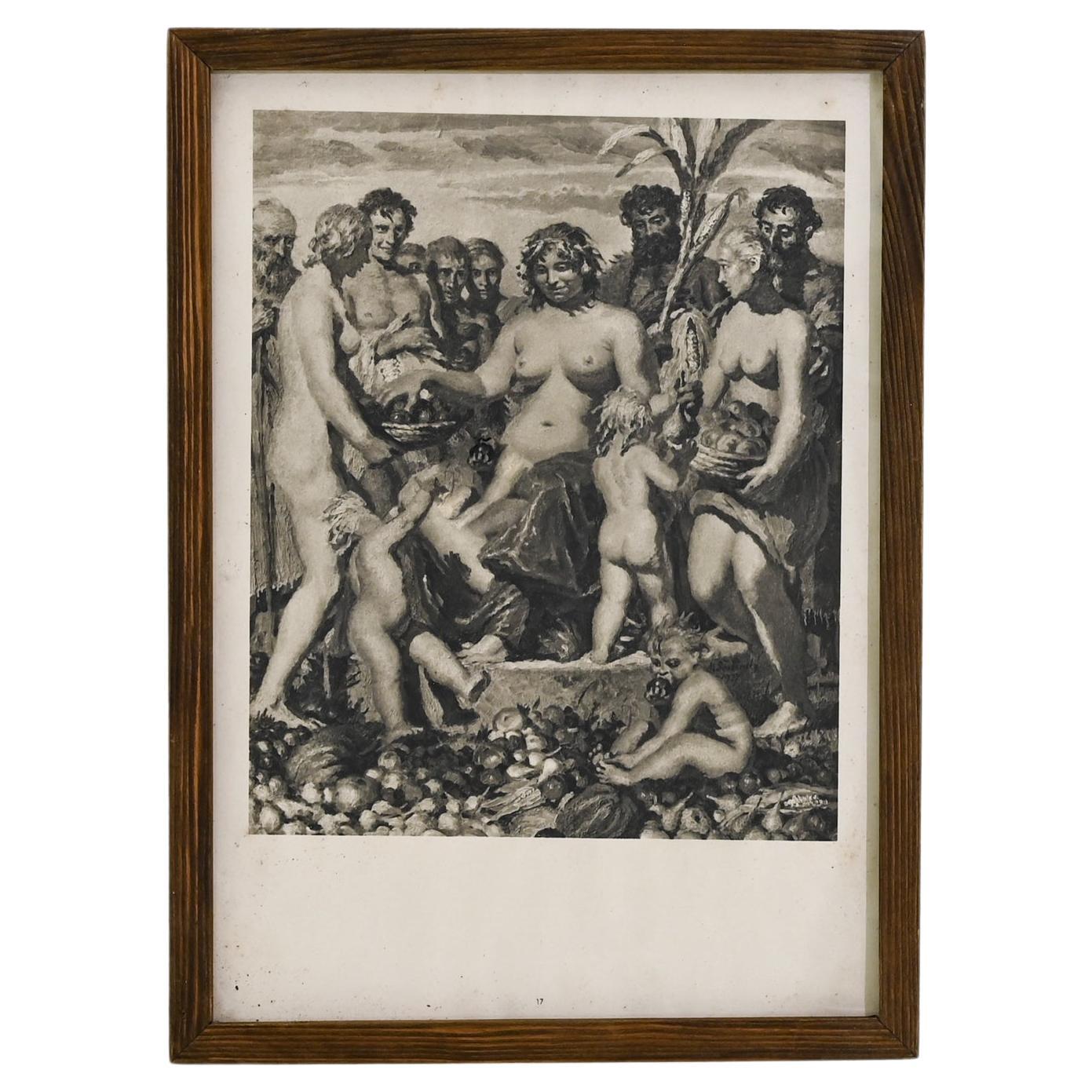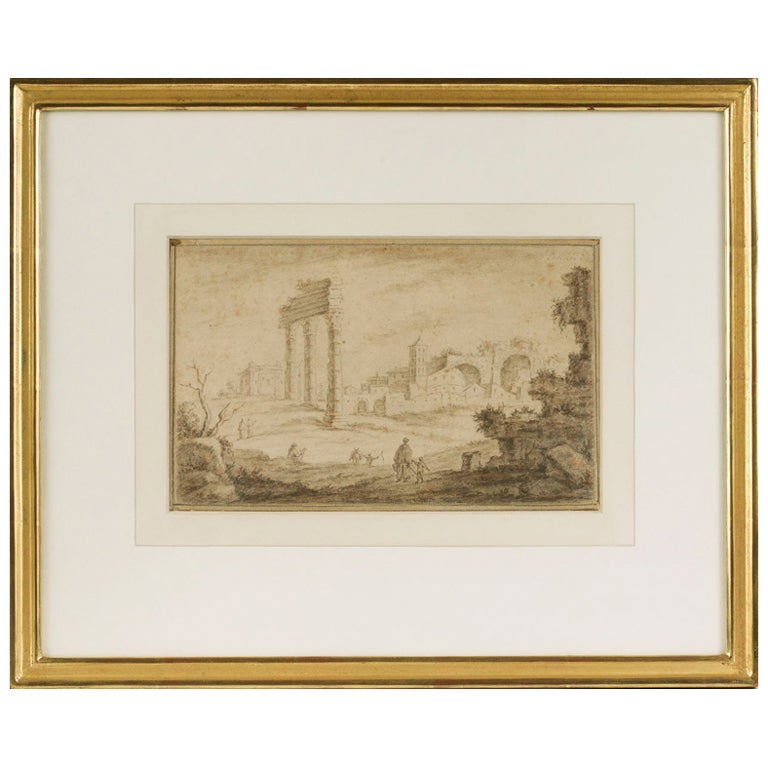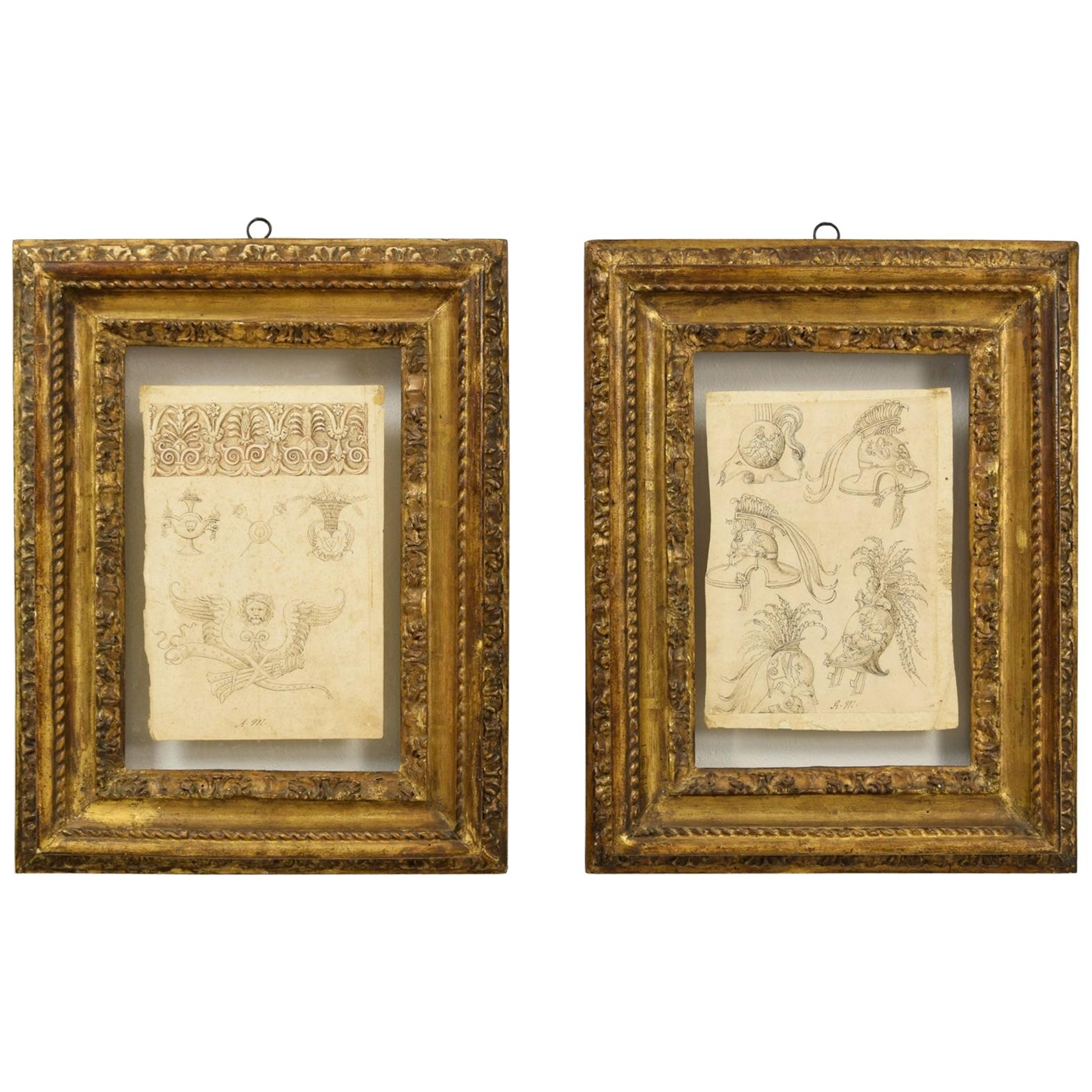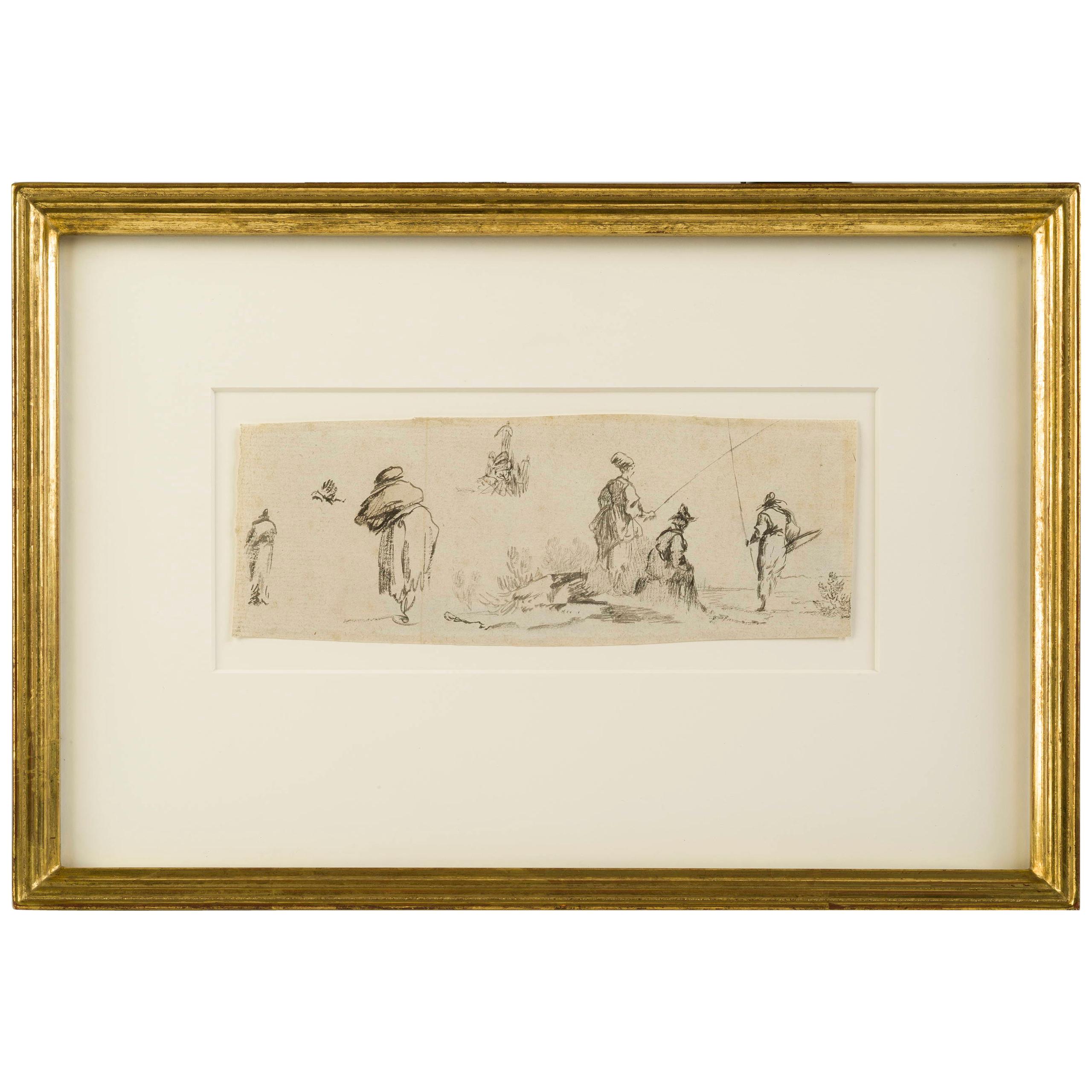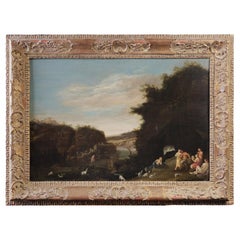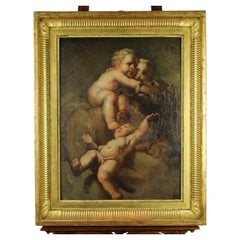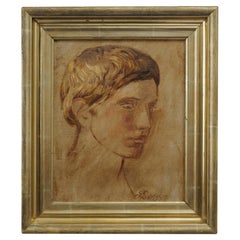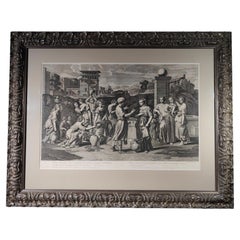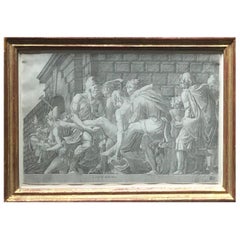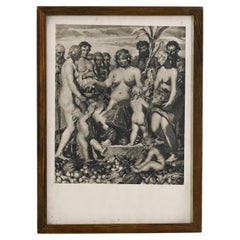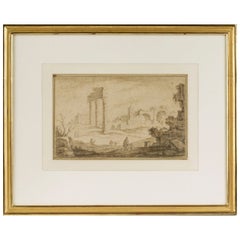Items Similar to Hans Sebald Beham (1500 Nuremberg - 1550 Frankfurt am Main) “Judicium des Paris”
Want more images or videos?
Request additional images or videos from the seller
1 of 5
Hans Sebald Beham (1500 Nuremberg - 1550 Frankfurt am Main) “Judicium des Paris”
$2,877
£2,137.21
€2,400
CA$3,995.05
A$4,359.52
CHF 2,286.64
MX$52,947.86
NOK 28,561.43
SEK 26,991.98
DKK 18,270.95
About the Item
Hans Sebald Beham (1500 Nuremberg - 1550 Frankfurt am Main)
“Judicium des Paris”, The Judgement of Paris, original copperplate engraving, framed behind glass, 1546, dated in the cane top left
Dimensions 17 x 13 cm
Hans Sebald Beham worked predominantly on a small scale, but with great talent. The German painter and engraver sometimes cultivated a bitingly harsh pictorial language and never shied away from conflict with the authorities; his work is nevertheless one of the most important examples of German Renaissance art after Albrecht Dürer.
Hans Sebald Beham was born in Nuremberg in 1500. It is not certain whether he really had the first name Hans, but it is assumed in research based on the shape of his monogram. Hans Sebald Beham was the older brother of Barthel Beham, who also became famous as a painter and engraver. Little is known about the training of both artists; however, due to their obvious proximity to Dürer's work, it is often assumed that Hans Sebald Beham and Barthel Beham completed their first apprenticeship in Albrecht Dürer's workshop. This would also be supported by their connection to Georg Pencz, another important Mannerist painter and engraver who had worked as Dürer's apprentice. Together with Pencz, the Beham brothers supported the radical theologian and reformer Thomas Müntzer, who had temporarily stayed in Nuremberg in 1524. The extent to which they actually joined his violent Anabaptist movement is unclear, but they were taken into custody by the authorities and expelled from the city - a comparatively lenient sentence.
Hans Sebald Beham did not stay abroad for long, but returned to his hometown of Nuremberg as early as 1528. There he produced numerous engravings based on mythical and biblical motifs with great diligence and attention to detail, particularly choosing scenes that allowed him to focus on naked women. He was promptly suspected of distributing pornography and Hans Sebald Beham was once again forced to flee Nuremberg. The artist went to Munich, where he worked for Albrecht von Brandenburg, among others, who, as a cardinal and promoter of the sale of indulgences, was one of the fiercest opponents of Martin Luther and the Reformation, but who deliberately ignored the talented Beham's commitment in this regard due to his penchant for art. Nevertheless, he did not stay in Munich for long and instead moved on to Frankfurt am Main in 1532, where he established himself as an artist and respected member of society to such an extent that he was granted full citizenship in 1540.
Hans Sebald Beham created a large number of woodcuts and engravings in Frankfurt, of which around 570 works have survived to this day.
In doing so, he increasingly distanced himself from the model of his presumed teacher Dürer and showed ever clearer influences of the Italian Renaissance.Hans Sebald Beham hardly made an appearance as a painter; only one work has survived, a decoration for a table top by his frequent patron Albrecht von Brandenburg, which can be admired today in the Louvre in Paris.His hometown of Nuremberg was late to reconcile itself with its outcast son: in 2011, a major retrospective of the Beham brothers was held in the Albrecht Dürer House in Nuremberg - under the motto The Godless Painters of Nuremberg, an allusion to the reasoning behind the former verdict of felony.
Hans Sebald Beham died in Frankfurt am Main on November 22, 1550.
- Dimensions:Height: 6.7 in (17 cm)Width: 5.12 in (13 cm)Depth: 1.19 in (3 cm)
- Style:Renaissance (Of the Period)
- Materials and Techniques:
- Place of Origin:
- Period:
- Date of Manufacture:1546
- Condition:Wear consistent with age and use.
- Seller Location:Münster, DE
- Reference Number:1stDibs: LU9172242193932
About the Seller
5.0
Recognized Seller
These prestigious sellers are industry leaders and represent the highest echelon for item quality and design.
Established in 2000
1stDibs seller since 2023
5 sales on 1stDibs
- ShippingRetrieving quote...Shipping from: Münster, Germany
- Return Policy
Authenticity Guarantee
In the unlikely event there’s an issue with an item’s authenticity, contact us within 1 year for a full refund. DetailsMoney-Back Guarantee
If your item is not as described, is damaged in transit, or does not arrive, contact us within 7 days for a full refund. Details24-Hour Cancellation
You have a 24-hour grace period in which to reconsider your purchase, with no questions asked.Vetted Professional Sellers
Our world-class sellers must adhere to strict standards for service and quality, maintaining the integrity of our listings.Price-Match Guarantee
If you find that a seller listed the same item for a lower price elsewhere, we’ll match it.Trusted Global Delivery
Our best-in-class carrier network provides specialized shipping options worldwide, including custom delivery.More From This Seller
View AllDaniel Cletcher 17th Century Painting Oil on Wood Panel 1628 Den Haag Flemish
Located in Münster, DE
A landscape with nymphs and satyrs revelling by a stream , 1628
Daniël Cletcher, Den Haag 1599
Died: Den Haag buried on 1632-11-25
Father: Thomas Cletcher sr. (? - ca. 1655)
Mother...
Category
Antique 1620s Dutch Baroque Paintings
Materials
Wood
Gerhard Uhlig Watercolor “untitled”, created in 1984
Located in Münster, DE
Gerhard Uhlig (1926-2015)
Watercolor “untitled”, created in 1984, signed and dated by hand, framed behind glass
Dimensions:
Frame size: 43 x 34 cm
Sheet size: 15 x 10 cm
Gerha...
Category
Vintage 1980s German Modern Contemporary Art
Materials
Paint, Paper
17th Century Oil Painting of a Lion with Putti
Located in Münster, DE
Painting "Three putti playing with a lion", Italy, late 17th century, oil on canvas, framed
Picture size: height 63 cm, width 47.5 cm
Frame size: height 78 cm, width 63 cm
Category
Antique Late 17th Century Italian Baroque Paintings
Materials
Canvas, Paint
Joakim Frederik Skovgaard Study for the work on Viborg Cathedral, Oil o. C. 1895
Located in Münster, DE
Joakim Frederik Skovgaard (1856 Copenhagen - 1933 ibid.)
Study for the work on Viborg Cathedral,
Oil on canvas, painted in 1895, signed, dated, framed, d...
Category
Antique 1890s Danish Belle Époque Paintings
Materials
Canvas
Bernhard Pankok Drawing “Scene from the English garden in Munich” 1893
Located in Münster, DE
Bernhard Pankok (1872-1943) Drawing “Scene from the English garden in Munich”
Pencil drawing, framed, 1893, signed and dated
Dimensions 34x 28 cm
On May 16, 1872, one of the most i...
Category
Antique 1890s German Belle Époque Paintings
Materials
Paper
Gerhard Uhlig (1926-2015) Drawing with graphite pencil, unique “untitled” 1990
Located in Münster, DE
Gerhard Uhlig (1926-2015)
Drawing with graphite pencil, unique “untitled”, signed and dated by hand, created 1990, framed behind glass
Dimensions:
Sheet size 15 x 21 cm
Frame siz...
Category
1990s German Modern Contemporary Art
Materials
Paper
You May Also Like
Old Engraving from the xvii Century: Nicolas Paussin, 1677
Located in Madrid, ES
Old engraving from the 17th century: Nicolas Paussin 1677
Large seventeenth century engraving dated 1677. With very decorative back frame total measures: 91x71 cm and only the engra...
Category
Antique 17th Century Drawings
Materials
Paper
16th Century School of Fontainebleau Engraving
By Master F.G.
Located in New York, NY
This 16th century French engraving illustrates an episode in the Trojan War – although the actual one illustrated is in question. According to recent scholarship, it depicts the corp...
Category
Antique 16th Century French Renaissance Prints
Materials
Paper
20th Century Czech Artwork with Wooden Frame
Located in High Point, NC
This striking piece is a 20th-century Czech print, capturing the classical essence of mythological storytelling through its detailed engraving. The scene, reminiscent of an ancient w...
Category
20th Century Czech Prints
Materials
Wood
$136 Sale Price
30% Off
Drawing, Flemish School, 18th Century
Located in Kittery Point, ME
Ancient Ruins with Strollers.
Brown wash and graphite.
Category
Antique Mid-18th Century Dutch Neoclassical Drawings
Materials
Paper
$1,920 Sale Price
20% Off
17th Century, Pair of Italian Ink Drawings on Paper with Studies for Grotesques
Located in IT
17th century, pair of ink drawings on paper with studies for grotesques, friezes and helmets.
Painter of central Italy of the 17th century, signed with monogram “A.M.”.
Measurements: cm L 45.5 x H 59.5 x 5.5; cm 22 x 33 / cm L 46.5 x H 59 x 5.5; cm 22.5 x 31.5
The pair of sheets, in good condition, is framed by antique frames in carved and gilded wood. They show some china studies with some studies for different subjects. Specifically, the first sheet represents the design of a frieze of Renaissance taste under which are some studies probably referring to a family coat of arms. Below the center is a monogram “A.M.”.
The sheet is also worked on the back in which are drawn some articulated elements of decoration in the style of the Renaissance grotesque...
Category
Antique 17th Century Italian Baroque Drawings
Materials
Paper
Drawing Attributed to Jean-Baptiste Pillement
By Jean-Baptiste Pillement
Located in Kittery Point, ME
Two-faced drawing.
Studies of characters and harbor scene.
With an inscription stating it is from the sketchbook in the collection of Dr. Manuel de Espirito Santo in Lisbon.
Ink a...
Category
Antique Late 18th Century French Neoclassical Drawings
Materials
Paper
$2,200 Sale Price
20% Off
